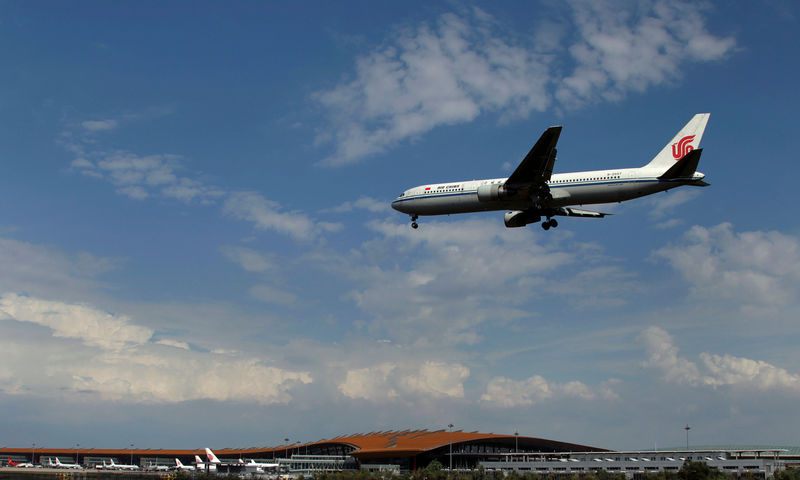(Bloomberg) -- China’s top three airlines saw their Hong Kong-listed shares surge last year, but there is still potential for more gains.
China Southern Airlines Co., Air China Ltd. and China Eastern Airlines Corp. are trading at a discount to peers in the region and their valuations, by some metrics, are still off their peaks in the past five years. Analysts have also raised their projections for the three airlines’ 2018 profits over the past four weeks, with the biggest earnings boost of 11.8 percent for China Eastern, according to data compiled by Bloomberg.
This comes amid China’s easing of price controls for domestic destinations flown by at least five carriers earlier this month, allowing a price hike of as much as 10 percent. That’s making connections to top-tier cities such as Beijing and Shanghai even more profitable for the airlines.
“The pricing reform will have far-reaching impact on the future earnings power of China’s airlines,” said Pan Jiang, chief executive officer of private fund Shanghai V-Invest Co. “That’s why I think their valuation still looks attractive compared to overseas peers.”
Valuation Discount
The three carriers’ estimated price-earnings ratios for the next 12 months are below that of rivals in Asia.
| Air China | China Eastern | China Southern | Singapore Airlines | Asian Average | |
| Estimated P/E | 12.44 | 12.69 | 11.56 | 24.55 | 14.23 |
“The big three Chinese carriers are not overvalued yet,” said Corrine Png, chief executive officer of Crucial Perspective Pte, a Singapore-based equity researcher focused on Asian transportation, citing Chinese airlines’ strong earnings.
To be sure, an imminent correction in the Chinese airline stocks can’t be ruled out. China Southern already surged 100 percent in Hong Kong trading last year, Air China soared 92 percent, and China Eastern jumped 60 percent, far outperforming the Hang Seng Index.
The trio have made further gains in the first three weeks of 2018 and surpassed analysts’ consensus 12-month stock-price estimates, data compiled by Bloomberg show. Their 12-month forward P/E ratio is also larger than the five-year average of less than 10, the data show.
Yet the pricing reform, along with a strengthening yuan and improving Chinese economy, are combining to boost confidence in the sector.
POSITIVE FACTORS
For routes to and from China’s top 10 airports that are now eligible for price increases, every 1 percent hike in fares will lead to an annual profit gain of 140 million yuan ($22 million) at Air China, 120 million yuan at China Southern and 100 million yuan at China Eastern, according to estimates by Huatai Securities Co.
Other factors working in the airlines’ favor include a stronger yuan and fast-growing passenger demand in China, which is expected by the International Air Transport Association to overtake the U.S. as the world’s biggest aviation market -- defined by traffic to, from and within the country -- as early as 2022.
The Chinese currency’s gain of about 7 percent against the dollar last year is making it less costly for domestic airlines to service dollar-denominated debt, and helping them cope with higher fuel costs.
While rising oil prices would weigh on earnings, airlines are able to pass on a larger chunk of fuel expenses in a market with strong travel demand, Crucial Perspective’s Png said. She added that the Chinese airline sector’s passenger traffic will probably expand 9 percent to 10 percent annually, well ahead of the global average, in the next five years.
Furthermore, China’s air-travel rate remains low, with each person making 0.35 trips in 2016, trailing the 2.87 for the U.S. in the same period, according to data compiled by Tianfeng Securities Co.
“Chinese carriers have the current environment working in their favor,” said Toliver Ma, a Hong Kong-based analyst for Guotai Junan Securities Co. “There is still upside for the three carriers’ stocks even if the increase going forward moderates.”
